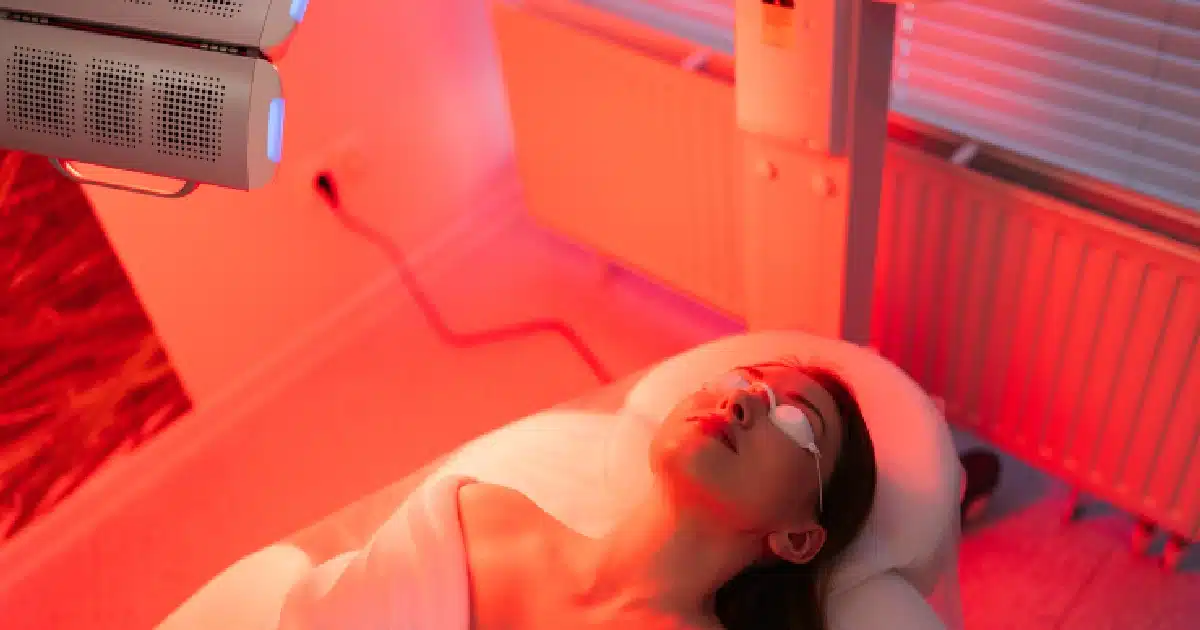The chemical peel process is a popular cosmetic procedure designed to improve the skin’s appearance and texture. It involves applying chemical solutions to the skin, which causes the outermost layer to exfoliate and eventually peel off. This procedure reveals smoother, healthier-looking skin underneath. Chemical peels can address various skin concerns, such as wrinkles, acne scars, sun damage, and uneven pigmentation; if you’re considering a chemical peel, knowing and understanding what to expect during and after the treatment is essential.
What are Chemical Peels?
Chemical peels are a well-known skincare treatment that can do wonders for your skin. Imagine giving your face a fresh start by exfoliating and rejuvenating it! Essentially, a chemical peel involves applying a particular solution to your skin, which causes the top layer of your skin to peel off.
The solution used in chemical peels contains various chemicals such as alpha-hydroxy acids (AHAs), beta-hydroxy acids (BHAs), or trichloroacetic acid (TCA). These chemicals break down the bonds between skin cells, allowing the outermost layer to shed and reveal a healthier, smoother layer beneath.
Chemical peels can help address a range of skin concerns. They can enhance unwanted fine lines and wrinkle appearance, reduce acne and acne scars, even out the skin tone, and minimize the undesirable appearance of age spots or sun damage. A chemical peel might be worth considering when dealing with any of these skin issues.
Usually, getting a chemical peel starts with thoroughly cleansing your face. Then, the appropriate chemical solution is carefully applied to one’s skin and left on for a specific time. You might experience tingling or slight burning sensations during this period, but don’t worry; it’s usually temporary and tolerable. After the desired time, the solution is neutralized, and your skin is cleansed again.
After a chemical peel, your skin might appear slightly red or feel sensitive for a few days. It’s crucial to religiously follow the aftercare instructions provided by your skincare professional, which typically include using a gentle cleanser, moisturizing, and protecting your skin from the sun. It’s important to note that chemical peels can vary in strength, from mild to profound, so the recovery time and potential side effects may differ.
It’s recommended to consult with a qualified dermatologist or aesthetician before deciding to undergo a chemical peel. They can assess your skin type, discuss your goals, and determine the most suitable type and strength of chemical peel for you.
What to Expect from Chemical Peels
Before the Treatment
Before undergoing a chemical peel, you will typically consult a dermatologist or a skincare professional. They will evaluate your skin type, discuss your goals and expectations, and determine the appropriate type and strength of the chemical peel for your specific needs. It’s crucial to disclose any medical conditions, allergies, or medications you’re currently taking to ensure the safety and effectiveness of the procedure.
During the Treatment
On the day of the chemical peel, your skin will be cleansed thoroughly to remove any oils, dirt, or makeup. The treatment area may also be prepped with a pre-peel solution to enhance the penetration of the chemical peel solution. Protective goggles or eye pads may be provided to shield your eyes during the procedure.
Then, chemical peel solutions are applied to the skin using a brush, cotton applicator, or sponge. The specific chemicals used can vary, including alpha-hydroxy acids (AHAs) like glycolic acid, beta-hydroxy acids (BHAs) like salicylic acid, or trichloroacetic acid (TCA). The solution choice depends on the depth of the desired peel and the skin concerns being addressed.
As the chemical peel solution is applied, you may experience mild tingling or stinging sensations. This symptom is typical and should subside relatively quickly. However, you must notify the treatment professional if you experience severe discomfort or pain.
The chemical peel is typically left on the skin for a specified duration, depending on the type of peel and the desired results. During this time, it’s common to feel warmth or a mild burning sensation. The professional may use a fan or cold compress to alleviate any discomfort.
After the Treatment
Once the wanted amount of time has passed, the professional will neutralize the chemical peel solution using water or a specialized neutralizing agent. This step stops the peeling process and prevents further skin damage.
After the chemical peel treatment, your skin may appear red, similar to a sunburn, and feel tight or slightly swollen. This experience is a normal reaction and typically fades away only after a few hours up to a few days, greatly based on the depth of the peel. It’s crucial to follow the post-treatment instructions provided by your skincare professional, which may include the following:
- Avoiding sun exposure: Protecting your skin from the sun’s harmful rays is essential to prevent further damage. Sunscreens with high SPF should be applied daily, even on cloudy days.
- Moisturizing: Your skin may start feeling dry and tight after the treatment. Applying a gentle moisturizer multiple times a day can help alleviate these symptoms.
- Avoiding harsh skincare products: For a certain period after the chemical peel, you may be advised to avoid using products with active ingredients, such as retinol or exfoliating agents. These can irritate the skin.
- Avoid picking or peeling: It’s crucial to resist the temptation to pick or peel the skin as it heals. This step can lead to scarring or pigmentation issues.
- Practicing gentle skincare: During the healing process, it’s essential to use gentle skincare products and avoid abrasive scrubs or harsh cleansers that may irritate the skin.
You may notice your skin starting to peel or flake in the days following the treatment. This step is a natural part of the exfoliation process and is typically more noticeable with deeper chemical peels. It’s important not to force or pick at the peeling skin, which can lead to complications and potential scarring. Allow the skin to shed naturally, and continue following your skin care professional’s instructions for optimal results.
Your recovery time varies depending on the depth of the peel and individual factors. Superficial peels may have minimal downtime, while medium or deep peels may require several days to a week for your skin to heal completely. It’s essential to exhibit utmost patience and give your skin the time it needs to regenerate and reveal the desired improvements from chemical peels.
Final Takeaways
In conclusion, the chemical peel process involves applying chemical solutions to the skin, exfoliating the outer layer, and promoting skin rejuvenation. During the chemical peel treatment, you may experience a tingling sensation, and afterward, your skin may appear red and feel tight. Following the appropriate post-treatment care instructions, such as sun protection and gentle skincare, is crucial for optimal healing and results. Consult with skin care professionals to determine the most suitable chemical peel for your skin concerns and ensure a safe and effective treatment.
Are you interested in experiencing chemical peels? Our great friends at LOURE Aesthetics can help you today. Visit them now!







